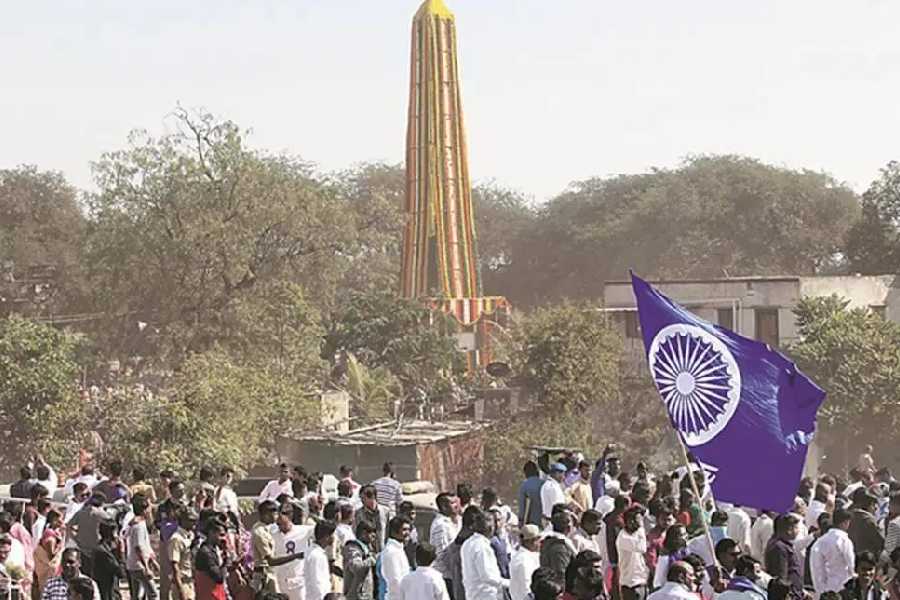Book: BHIMA KOREGAON: CHALLENGING CASTE
Author: Ajaz Ashraf
Published by: AuthorsUpFront
Price: Rs 795
In the opening pages of Bhima Koregaon, Ajaz Ashraf sounds a word of caution when he tells the reader that the book lacks a beginning. Not just beginnings but tracing thematic connections is difficult since diverse events are yoked together across a wide swathe of historical time ranging from Shivaji’s coronation in 1674 till now. Consequently, linkages are not easy to find as it remains unclear how Chhatrapati Sambhaji’s cremation of 1689 can connect with a contemporary Maoist conspiracy, also known as the BK 16 case.
To be sure, the lack of coherence is not a sign of narrative weakness, but a deft illustration of the ways in which the official narrative incorporated the Maoist plot allegedly hatched in the Elgar Parishad on December 31, 2017 in an ongoing caste contestation which erupted on January 1, 2018 at Bhima Koregaon village off Pune. According to the police, the Maoist involvement in caste warfare was evident from its linkages with the Parishad, which had pledged to defeat Brahmanical Hindutva forces, the “new Peshwai” order, and that this pledge was renewed in the march to the Victory Pillar in Bhima Koregaon. The march, an annual Dalit-Ambedkarite event, commemorates the gallantry of Mahar soldiers of the British troops who helped vanquish the caste oppressor, Peshwa Baji Rao II, at the Battle of Bhima Koregaon in 1818. Reviewing the events of January 1, 2018, Ashraf notes that while the police ‘showed’ the Maoist hand in caste violence, it ‘omitted’ the roles that the Hindutva leaders, Sambhaji Bhide and Milind Ekbote, played in mobilising the Marathas against the Dalits at Bhima Koregaon. Understandably then, Ashraf is right in identifying the problem of beginnings.
Leaving aside the somewhat extended Maoist plot, a narrative challenge in the book, Ashraf’s contribution lies in his excavation of caste contestations of modern Maharashtra. Traversing history, memory, myths and legends, Ashraf provides a fascinating account of contemporary caste politics through two distinct but related events: the contradictory caste narratives — Maratha and Dalit — emanating from the cremation of Chhatrapati Sambhaji, and the caste contestation implicit in the Battle of Bhima Koregaon. Gathering the historically-embedded tropes of caste challenges, the book examines how Brahmanical Hinduism, including its mutation into the new Peshwai order, has been repeatedly contested by Dalits and by other non-Brahmin castes. Contrary to the received understanding of hegemonic castes, Ashraf demonstrates that Marathas comprise heterogeneous social groups with contradictory social solidarities, a reality which the dominant leadership seeks to erase by homogenising subaltern Marathas against Dalits and Muslims.
Through extensive research, Ashraf highlights startling gaps in the Hindutva Maratha claim regarding Sambhaji’s cremation. This assertive claim represents the Maratha stake in the competing power struggle that different social groups have played in appropriating Shivaji’s legacy and in legitimating their opposition to Aurangzeb as the latter had tortured and killed Sambhaji. Ashraf scrutinises the infirmities in the Maratha narrative and demonstrates its connection with the active role that Bhide and Ekbote played in stoking caste violence at Bhima Koregaon.
By providing this historical backstory, Ashraf challenges the dominant account of caste hierarchy in contemporary times.










